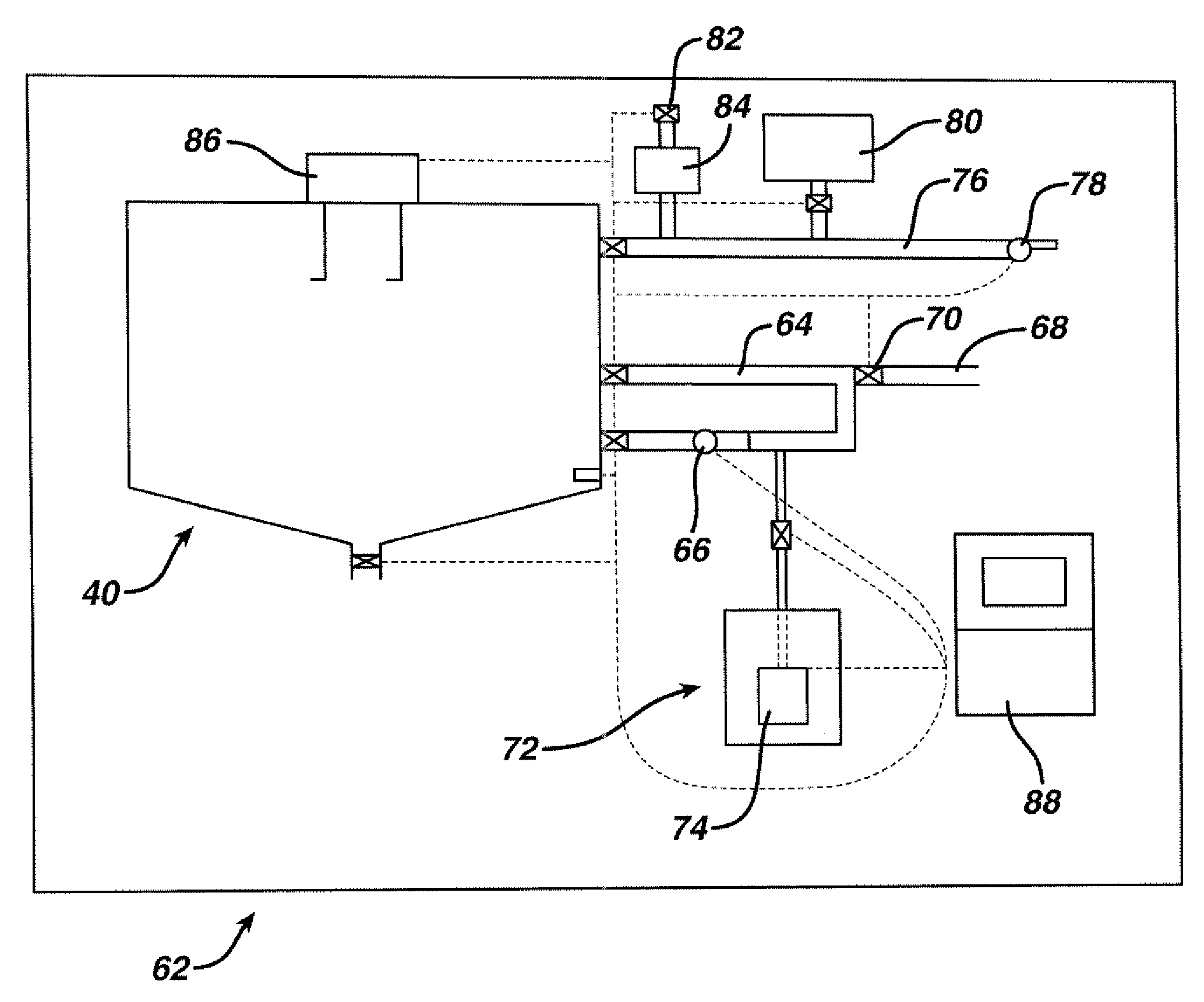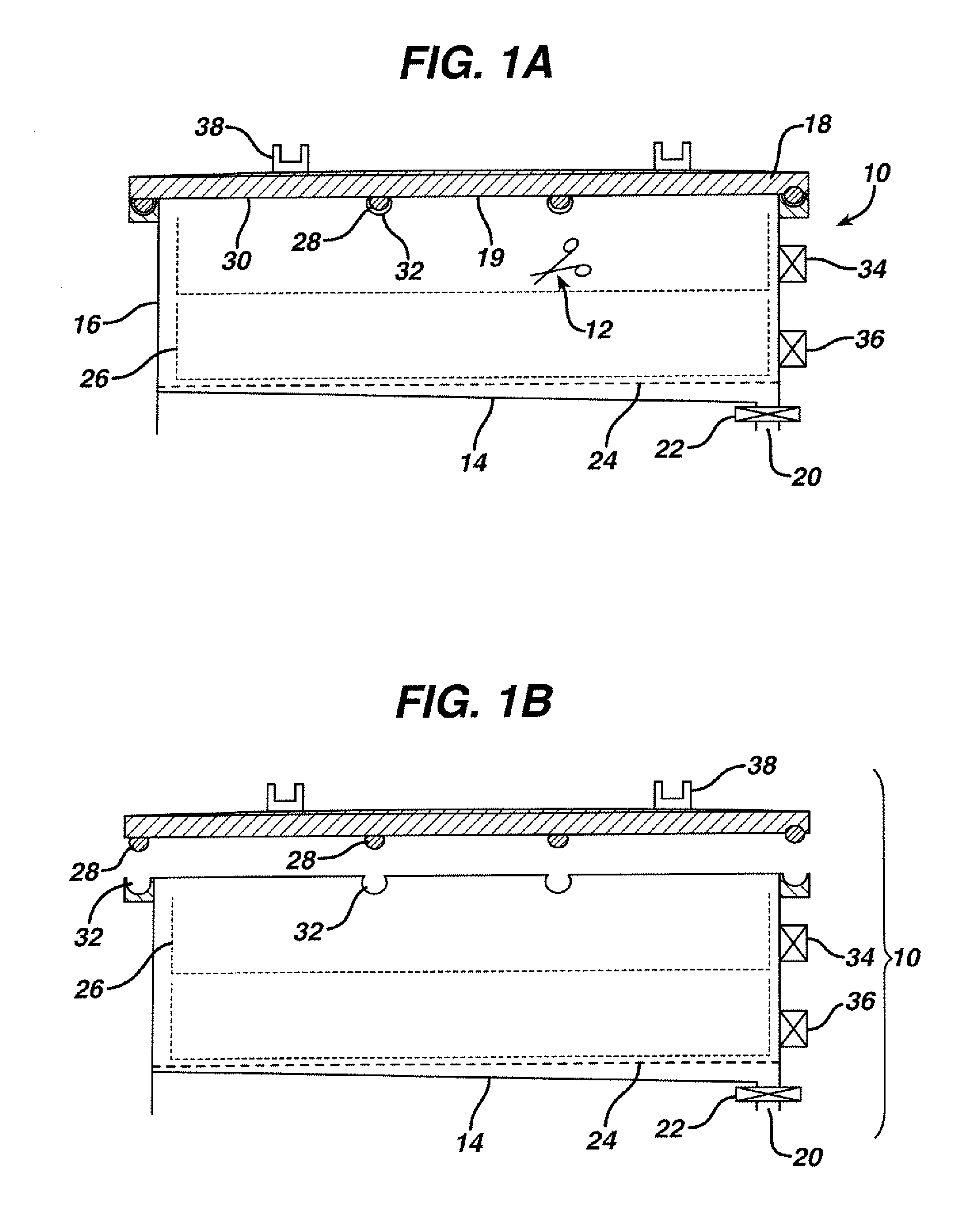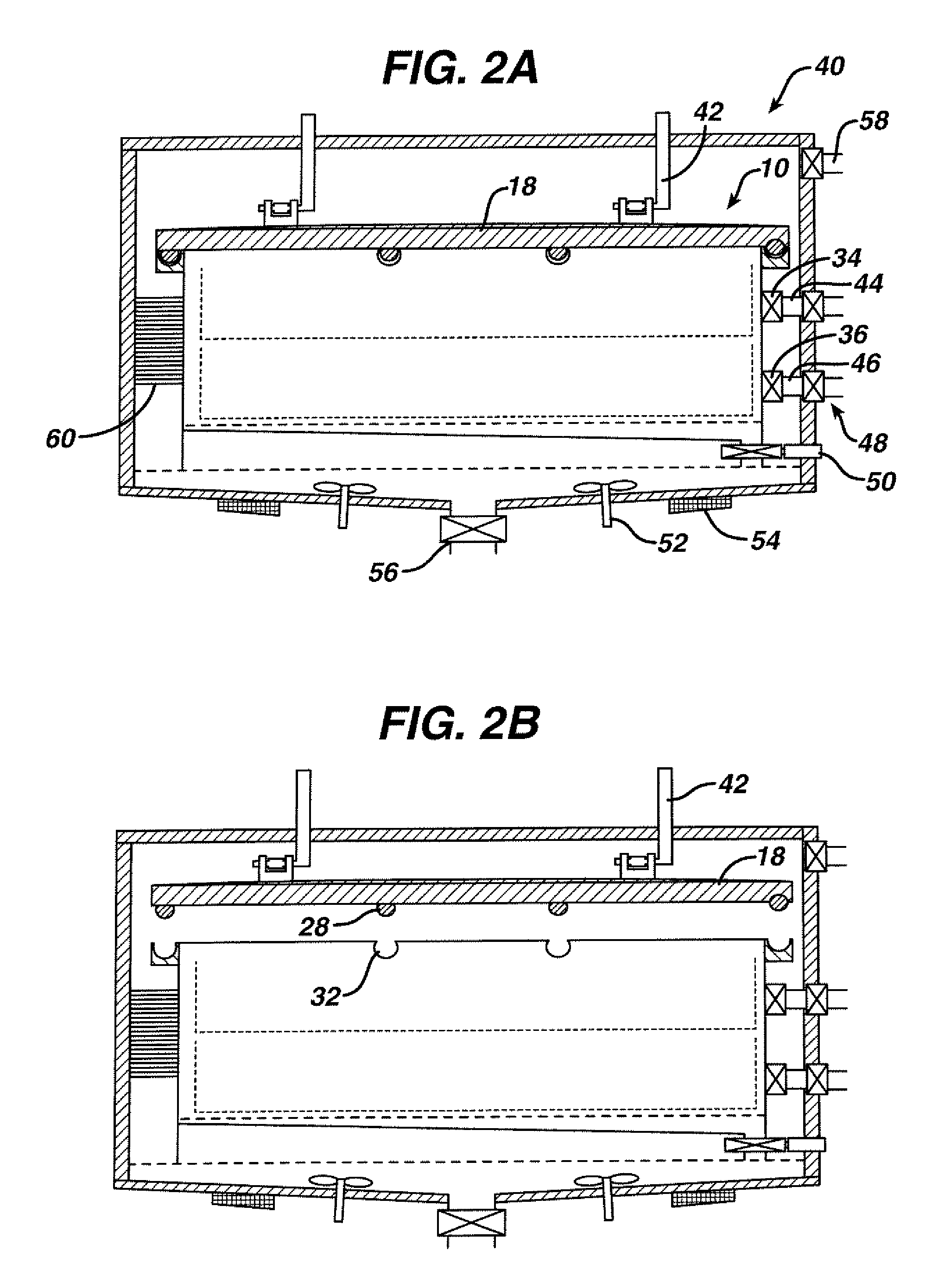Washer and decontaminator with lid control
a technology of lid control and decontamination device, which is applied in the direction of cleaning hollow objects, using liquids, cleaning hollow objects, etc., and can solve problems such as device contamination
- Summary
- Abstract
- Description
- Claims
- Application Information
AI Technical Summary
Benefits of technology
Problems solved by technology
Method used
Image
Examples
example a
[0048]Step 1: Loading a load in wire basket or tray into the right-most cleaning area
[0049]Step 2: Cleaning the load in the cleaning area. Optionally, this step may include detergent, surfactant, enzyme, cleaning chemical, spray, agitation, or ultrasound.
[0050]Step 3: Rinsing the load with water. Preferably, the water is distilled water, or DI water.
[0051]Step 4: Treating load with liquid hydrogen peroxide. Preferably, the liquid is in the form of mist.
[0052]Step 5: Moving load into the middle packaging area.
[0053]Step 6: Sliding load into an open gas permeable pouch and sealing the pouch. Optionally, the packaging may be a container with gas permeable barrier or CSR wrap.
[0054]Step 7: Moving load into the right-most sterilization area
[0055]Step 8: Reducing the pressure to below the vapor pressure of hydrogen peroxide.
[0056]Step 9: Sterilizing the load with vaporized peroxide. Optionally, the process further comprises exciting the atmosphere into plasma to complete the process.
example b
[0057]Step 1: Loading a load in wire basket or tray into the right-most cleaning area.
[0058]Step 2: Cleaning the load in the cleaning area. Optionally, this step may include detergent, surfactant, enzyme, cleaning chemical, spray, agitation, or ultrasound.
[0059]Step 3: Rinsing the load with water. Preferably, the water is distilled water, or DI water.
[0060]Step 4: Moving the load into the middle packaging area.
[0061]Step 5: Sliding the load into an open gas permeable pouch and sealing the pouch. Optionally, the packaging may be a container with a gas permeable barrier or CSR wrap.
[0062]Step 6: Moving the load into the right-most sterilization area.
[0063]Step 7: Sterilizing the load.
example c
[0064]Step 1: Loading a load in wire basket or tray into the cleaning area.
[0065]Step 2: Cleaning the load in the cleaning area. Optionally, this step may include detergent, surfactant, enzyme, cleaning chemical, spray, agitation, or ultrasound.
[0066]Step 3: Rinsing the load with water. Preferably, the water is distilled water, or DI water.
[0067]Step 4: Moving the load into the sterilization area.
[0068]Step 5: Sterilizing the load.
[0069]Step 6: Moving the load into the packaging area.
[0070]Step 7: Packaging the load with sterile pouch, container or CSR wrap.
PUM
 Login to View More
Login to View More Abstract
Description
Claims
Application Information
 Login to View More
Login to View More - R&D
- Intellectual Property
- Life Sciences
- Materials
- Tech Scout
- Unparalleled Data Quality
- Higher Quality Content
- 60% Fewer Hallucinations
Browse by: Latest US Patents, China's latest patents, Technical Efficacy Thesaurus, Application Domain, Technology Topic, Popular Technical Reports.
© 2025 PatSnap. All rights reserved.Legal|Privacy policy|Modern Slavery Act Transparency Statement|Sitemap|About US| Contact US: help@patsnap.com



